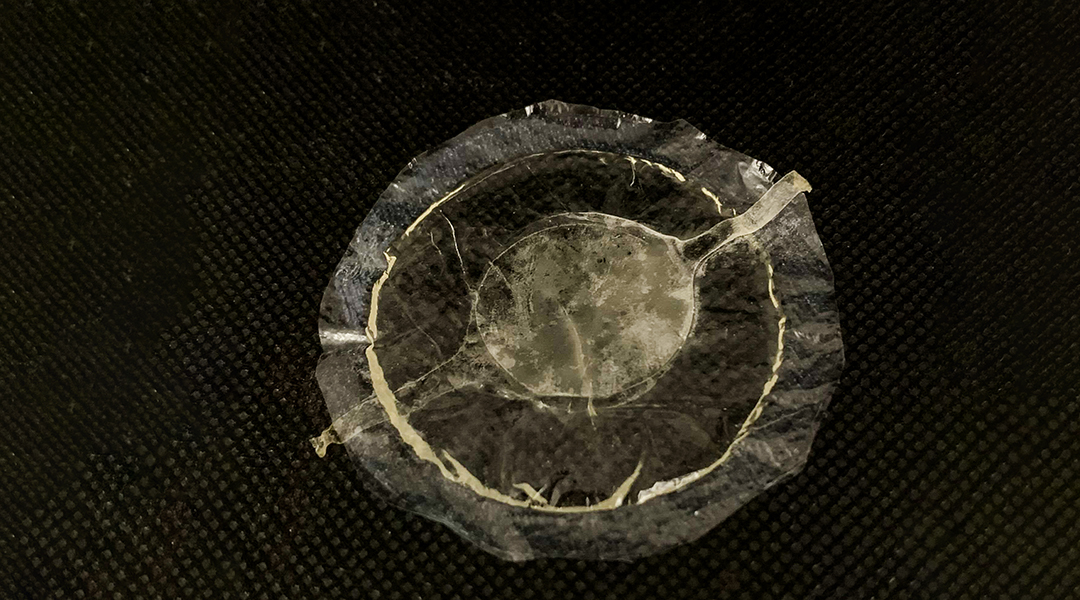The use of robots in our everyday lives is increasing exponentially, with applications ranging from industry to hospitality. Some researchers even envision a near future that, not unlike a scene from Star Wars, sees environments filled with robots. This isn’t in a galaxy far, far away, but right here on Earth — and possibly in your workspace or living room.
But such integration of autonomous or semi-autonomous machines designed to perform simple tasks into our lives isn’t without risk. Firstly, hard robots composed of metals and plastics working in conjunction with our soft human bodies could lead to injuries. Second is the potential impact on the environment. The creation of robots via irreversible processes means filling the environment with materials that do not decompose naturally.
The problem is that current soft robots are usually made using synthetic polymers, such as silicone rubbers and acrylic polymers. While low-cost and easy to handle, these materials are chemically stable and, thus, not biodegradable. This could lead to environmental destruction when robots are disposed of. In fact, scientists are already discovering fish with undegraded silicone rubbers and acrylic polymers deposited in their bodies.
Hence the need for soft robots made from biodegradable parts. Parts like the soft and biodegradable actuator suggested in new research published in the journal Advanced Intelligent Systems by researchers from the University of Electro-Communications in Japan, the Politecnico di Bari in Italy, and the École Polytechnique Fédérale de Lausanne in Switzerland.
“The actuator consists of gelatine electrodes placed on both sides of a polylactic acid (PLA) bag containing soybean oil, and all materials are biodegradable,” corresponding author Jun Shintake from the Department of Mechanical and Intelligent Systems Engineering at the University of Electro-communications, Tokyo, Japan, said.
Robots and humans in symbiosis
An actuator is a device that a robot uses to convert energy to movement, producing either linear or rotary motion. Shintake explained that while most soft robot actuators are driven by fluid, the system created by this international team is instead driven electrically.
In the bag made of PLA is soybean oil acting as the dielectric liquid sandwiched by electrodes made from a mixture of gelatine, glycerol, and sodium chloride. These biodegradable materials are things that the team point out are abundantly available.
“When a potential difference is applied between the electrodes, the electrodes are attracted to each other by the electrostatic force generated, causing the bag to deform,” Shintake explained. “The deformation allows for muscle-like contraction behaviour.”
The reliance on electricity means that the team’s actuator doesn’t need the large pumps and bulky compressors required by conventional fluidic actuators. As a result, this new actuator could be used in more compact robots also fitted with a small battery and controller. This is something that could be incredibly useful for robots that are required to work alongside humans in tight spaces.
The researchers point out that their actuator is compatible with biodegradable sensors and batteries currently being developed by other scientists. Of course, all this is little use if the actuator doesn’t perform well, so the team set about testing their soft biodegradable device.
The team reported that the results obtained for the biodegradable electrohydraulic soft actuators after testing aspects like compression and strain are comparable to those of nonbiodegradable actuators of the same type, representing the successful implementation of the concept.
“This adaptation to robotics will accelerate further performance improvement of actuators and integration with sensors and batteries, and eventually lead to the creation of environmentally friendly ‘green’ robots that are entirely composed of biodegradable elements,” Shintake concluded. “In a world full of such robots, mankind may live in a future in which humans, machines, and nature coexist in a highly symbiotic manner.”
Reference: Ryo Kanno, Fabio Caruso, Kazuma Takai, Yegor Piskarev, Vito Cacucciolo, Jun Shintake, Biodegradable Electrohydraulic Soft Actuators, Advanced Intelligent Systems (2023), DOI: 10.1002/aisy.202200239

















